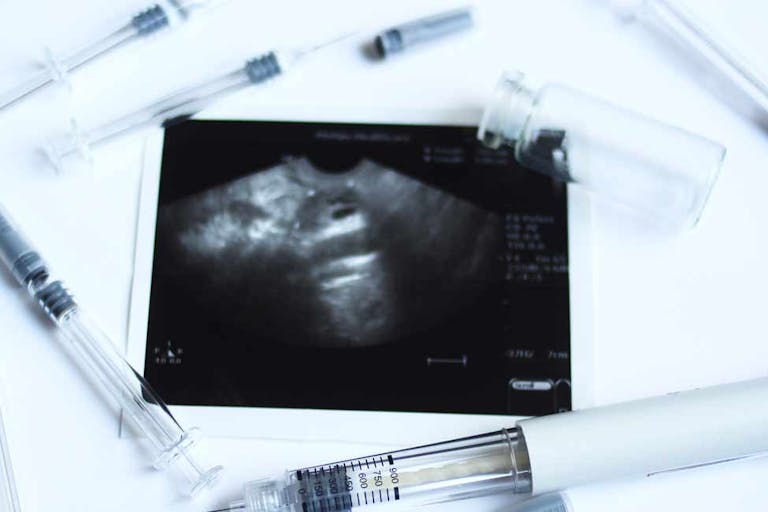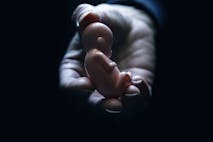
Man wins right to adopt his son created through illegal surrogacy
Nancy Flanders
·
Is the common IVF practice of ‘selective reduction’ abortion in peril due to Roe’s fall?
Since the Supreme Court decision overturning Roe v. Wade in June, the abortion industry has been giving constant warnings of how the decision will destroy the country. The latest example is from long-time pro-abortion writer Jill Filipovic for Bloomberg, lamenting that IVF and the fertility industry will be threatened due to the fall of Roe.
Filipovic begins by highlighting the angst-filled pregnancy journey of a woman named Elizabeth, who has a 16-month-old daughter and hopes to become a partner at her law firm. “[S]he’d been looking forward to a relaxing summer,” Filipovic writes. “[F]amily beach trips, a vacation with her girlfriends, watching her daughter’s budding personality take shape.”
Instead, when Roe fell, Elizabeth and her husband panicked and decided to try for another child now, as they worried IVF could soon become illegal. And, like many people who go through IVF, they had multiple embryos created — five, specifically — and did not plan to use all of them. “We have one precious daughter that we had through IVF,” Elizabeth told Filipovic. “We don’t want five more.”
READ: Creating babies to kill: The union of IVF and ‘selective reduction’
Often, fertility clinics purposely implant numerous embryos into the mother’s uterus, not with the hope of having twins or triplets, but to give them the best chance of having a successful implantation. But when “too many” implant and the mother becomes pregnant with multiples, the response often isn’t one of excitement. Instead, many times, “selective reduction” is chosen — a euphemistic term for abortion. Filipovic wrote about a conversation on this topic between a fertility doctor, Dr. Nicole Ulrich, and her patient, Margaret.
“Going up to two to three [eggs] is going to increase your chance of getting pregnant,” Ulrich tells her. But it would also increase her chances of getting pregnant with multiples: twins, triplets, or even quadruplets. Pregnancies of triplets or more can be dangerous for women and their fetuses alike, particularly if the woman is older or has health complications.
Margaret’s eyebrows arch, and she asks, “If more than one implants, what is the risk with the new law?”
“What I tell people,” Ulrich says, “even pre-decision with Roe, is if you get pregnant with multiples, your option is selective reduction”—a procedure that reduces the pregnancy down to twins or a single fetus.
“Is that legal still?” Margaret asks.
“It is, but not in Louisiana,” Ulrich says.
Article continues below
Dear Reader,
In 2026, Live Action is heading straight where the battle is fiercest: college campuses.
We have a bold initiative to establish 100 Live Action campus chapters within the next year, and your partnership will make it a success!
Your support today will help train and equip young leaders, bring Live Action’s educational content into academic environments, host on-campus events and debates, and empower students to challenge the pro-abortion status quo with truth and compassion.
Invest in pro-life grassroots outreach and cultural formation with your DOUBLED year-end gift!
Margaret wrings her hands.
“We would be able to find someone who will take care of you,” Ulrich assures her. “I just can’t tell you it’s this person at this facility. I could have a year or two ago, but right now, I can’t.”
Margaret goes quiet and rubs her fingers.
“It’s just a lot to take in,” she says.
Ulrich then complains, “It may end up being a situation where a woman is essentially forced to carry a high-order pregnancy, a multiple pregnancy, despite the risk to her health and her concerns about it.”
However, no one is “forcing” a woman to seek out IVF in the first place. And the option to not implant more embryos than a mother is willing to carry is never mentioned as an option, either.
What the issue comes down to, as Ulrich and Filipovic both explain, is time and money: IVF isn’t always covered by insurance, and more conservative treatments could end in failure.
But this line of thinking further commodifies children; rather than viewing these children as individual human beings who have their own inherent rights and dignity, they are seen as products people are owed. When a person spends so much time and money on creating something, they feel they are entitled to get the product they want, exactly as they want it.
As Filipovic notes herself, there is no sign anywhere of a threat to the fertility industry. At worst, fertility doctors may no longer be allowed to liberally use abortion as a so-called “treatment” for their own irresponsible practices. The current practices of commodifying children and using abortion as a panacea for any potential problem should, and must, end.
“Like” Live Action News on Facebook for more pro-life news and commentary!
Live Action News is pro-life news and commentary from a pro-life perspective.
Contact editor@liveaction.org for questions, corrections, or if you are seeking permission to reprint any Live Action News content.
Guest Articles: To submit a guest article to Live Action News, email editor@liveaction.org with an attached Word document of 800-1000 words. Please also attach any photos relevant to your submission if applicable. If your submission is accepted for publication, you will be notified within three weeks. Guest articles are not compensated (see our Open License Agreement). Thank you for your interest in Live Action News!

Nancy Flanders
·
Analysis
Cassy Cooke
·
Analysis
Cassy Cooke
·
Analysis
Cassy Cooke
·
Analysis
Cassy Cooke
·
Analysis
Nancy Flanders
·
International
Cassy Cooke
·
Analysis
Cassy Cooke
·
Analysis
Cassy Cooke
·
Analysis
Cassy Cooke
·
Analysis
Cassy Cooke
·